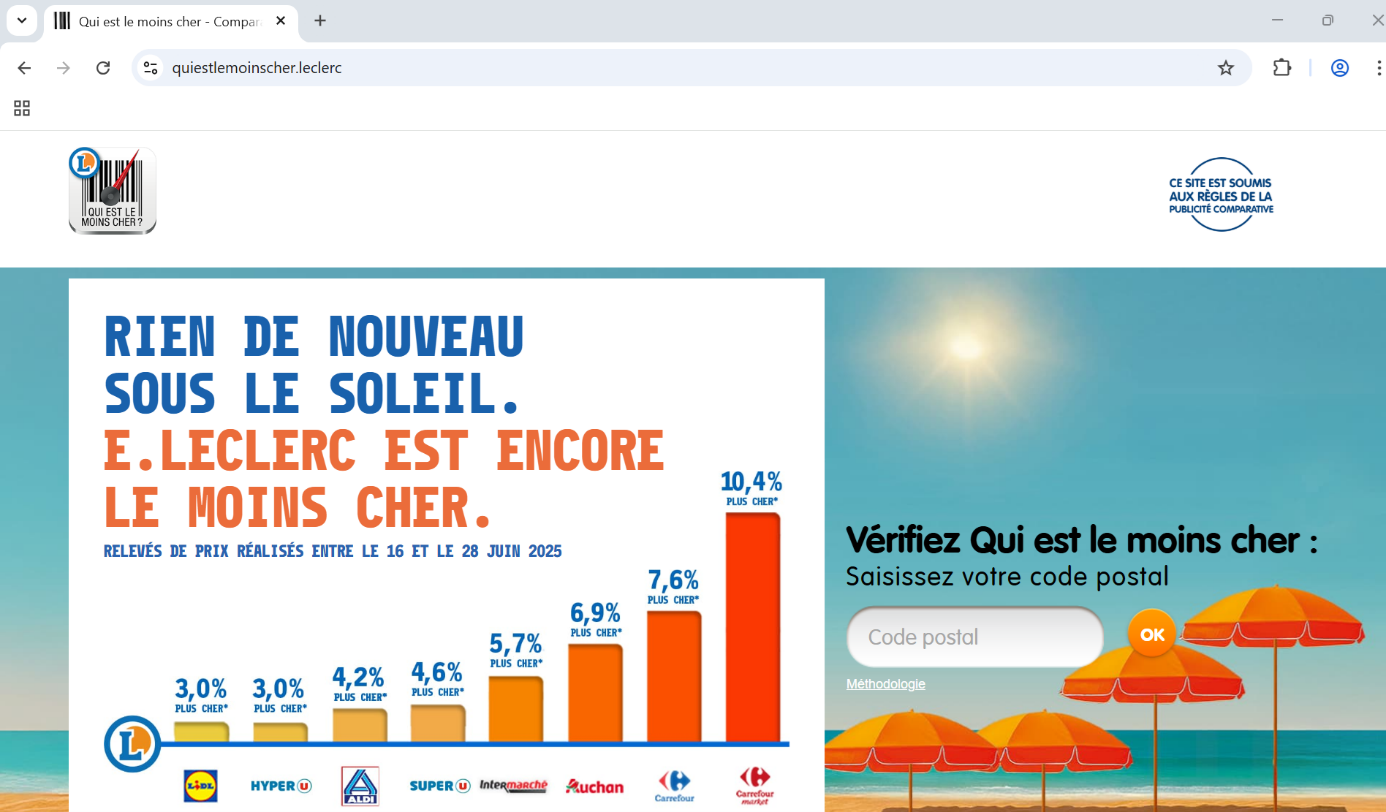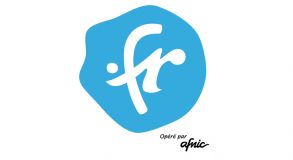The E.Leclerc brand secured its own top-level domain (brandTLD or dotBrand), .leclerc, in 2015. An as-yet rare initiative in the world of retail, and proof of an ambitious communication strategy: transforming a brand name into not only a commercial banner, but a genuine trustworthy digital infrastructure.
An example that marketing and communications divisions would do well to follow in the run-up to ICANN’s latest call for applications in 2026. Because behind the more technical aspects, a dotBrand can be a powerful strategic lever for any big business.
The reasons behind E.Leclerc’s choice of a dotBrand
Having a custom TLD is not something you do for the sake of it alone. For E.Leclerc, it was above all a question of controlling its digital identity.
Thanks to the .leclerc TLD, each Web address represents a label of authenticity. Gone are the risks of confusion: the brand guarantees its customers an official and secure website under .leclerc. A strong signal against phishing and spoof e-commerce websites. In a sector where trust can make or break – especially for click & collect services – it’s an argument that carries weight.
Within a cooperative movement, where stores are legally independent, it’s not always a simple task to assert a unified front. The .leclerc TLD establishes a clear framework: ACDLec (Association des Centres Distributeurs E.Leclerc), which manages the registry, retains control over the domain names and assigns them to the various entities. A model that ensures uniform practices and brand protection.
“The .leclerc TLD also gives members of the community and Internet end users interested in Leclerc goods, services and activities a safe Internet environment and helps counter phishing attempts more effectively.”
.leclerc is therefore a perfect illustration of how a brand can turn a technical choice into a strategic advantage: greater trust, greater coherence and greater agility.
In the retail sector, German supermarket Edeka has also opted for a brandTLD to secure its brand online.
Clearer communication tailored to each business line
Far from limiting itself to a corporate site, E.Leclerc has divided its domain into topic-specific areas:
- e.leclerc: the official brand website targeting consumers.
- mouvement.leclerc: the corporate website, retracing the Group’s history, its values and its commitments.
- quiestlemoinscher.leclerc: designed to reflect the brand’s marketing strategy based on price positioning, “quiestlemoinscher” gives direct and memorable confirmation of E.Leclerc’s promise to be the cheapest supermarket, thereby solidifying the idea in consumers’ minds.
- optique.leclerc, voyages.leclerc, parapharmacie.leclerc, drive.leclerc: clear vertical portals, each dedicated to a specific business line.
- recrutement.leclerc: an employer portal that adds to the credibility of recruitment offers.
- Ad hoc microsites like sport.leclerc, launched swiftly during dedicated campaigns.

Image description:
The background represents a sunny beach with a blue sky and orange parasols.
On the left, an insert reads in large print: “Rien de nouveau sous le soleil. E.Leclerc est encore le moins cher.” [There is nothing new under the sun. E.Leclerc is still the cheapest.]
Below, a bar chart compares E.Leclerc’s prices with those of other retail brands. Leclerc is shown as the cheapest option, the other brands being presented at between +3% to +10.4% more expensive:
Lidl 3% more expensive
Hyper U 3% more expensive
Aldi 4.2% more expensive
Super U 4.6% more expensive
Intermarché 5.7% more expensive
Auchan 6.9% more expensive
Carrefour 7.6 % more expensive
Carrefour Market 10.4% more expensive
To the right is an input field and an “OK” button to check which brands is the cheapest based on the user’s postcode.
In the top right is the wording:
“This site is subject to comparative advertising rules.”
This simple address system – activity + .leclerc – makes browsing more intuitive for consumers and acts as an above-the-line marketing channel: an address like “optique.leclerc” is easy to remember from a TV ad or billboard.
This strategy therefore positions the domain as a narrative tool.
- Simpler communication: each activity has its own identified space, thus avoiding disparate domain names and strengthening clarity.
- Enhanced security: customers know that a .leclerc website is not a spoof.
- Greater agility: the brand can swiftly launch new campaign sites and redirect them as needed, without relying on the availability of a .fr or .com TLD.
A strategic tool for the future
E.Leclerc understood early on that its custom TLD could be more than just a “domain name”. The brand has made it into a proprietary digital territory where it can write its own story, deploy its business lines and secure its interactions with the public.
At a time when trust and clarity are becoming key to customer relations, this strategy is an excellent example of a brand’s ability to transform a technical choice into a competitive communication advantage.
The ICANN next round of new gTLDs, on hold since 2012, set to open in 2026. Hundreds of applications are expected, and some big names are already planning to secure their brand online.
E.Leclerc staked its claim as a pioneer in 2015. In 2026, the market will be much more open. Brands ready to seize the opportunity will be able to turn their name into an exclusive, secure and readable digital territory.
For companies looking to plan ahead, now is the time to start considering:
- What would a dotBrand add to your digital strategy?
- How can you structure your business lines, services and campaigns around a dotBrand?
- What guarantees of security and trust can you offer your customers and partners?
So the question is not “Do we need a dotBrand?”, but rather: “Can we afford to remain dependent on generic domains when our competitors have their own digital territory?”.
Our staff at Afnic would be delighted to discuss your brandTLD plans. As Europe’s leading back-end registry operator, we put our expertise and sovereign infrastructure to work to guarantee the performance, security, resilience and compliance of market-leading brands.
Three recommendations for brands wanting to take the leap
1. Start preparing now: obtaining a TLD is a long-term project (legal, technical, marketing, financial). Your application needs to be in order and budgeted ahead of the official opening in April 2026.
2. Map your potential uses: business lines, campaigns, corporate communication, employer brand. The clearer the use cases, the more warranted the investment.
3. Involve the business lines: a brandTLD should not be the sole reserve of the legal or IT department. It is also a communication tool that needs to be spearheaded by marketing.



